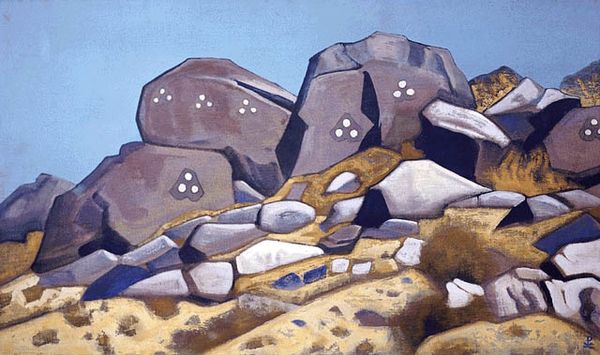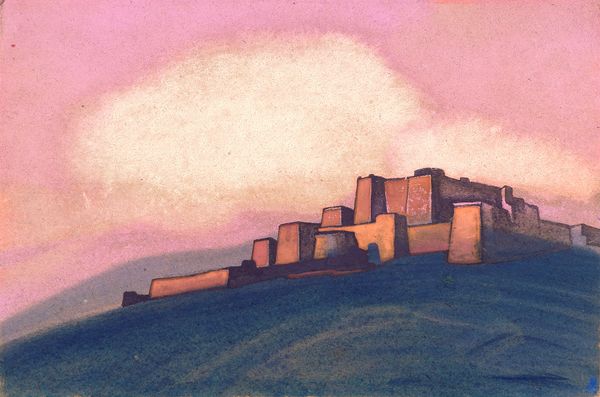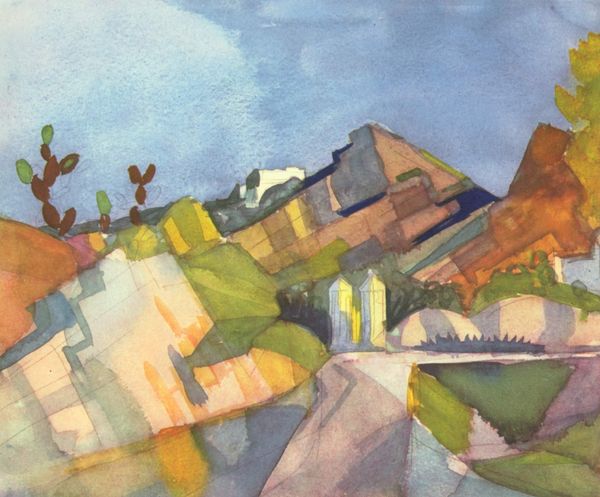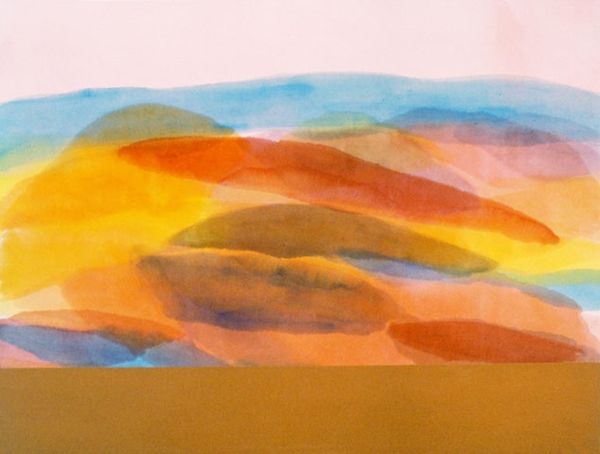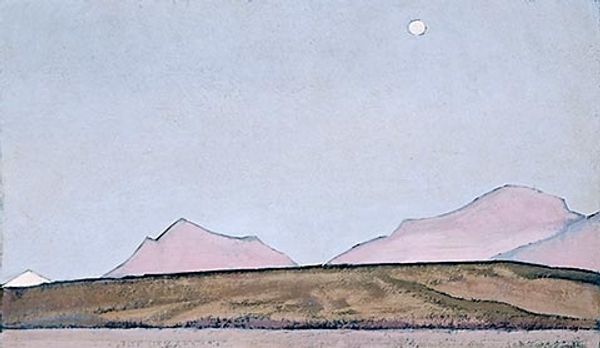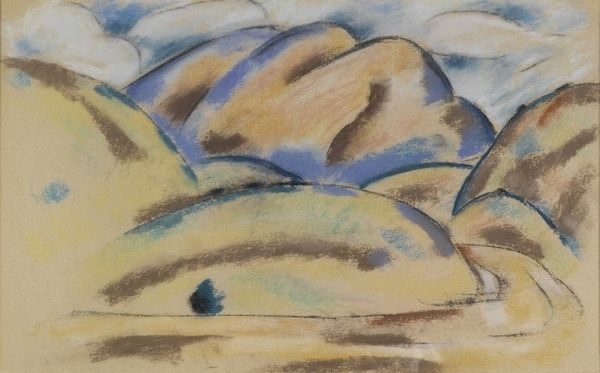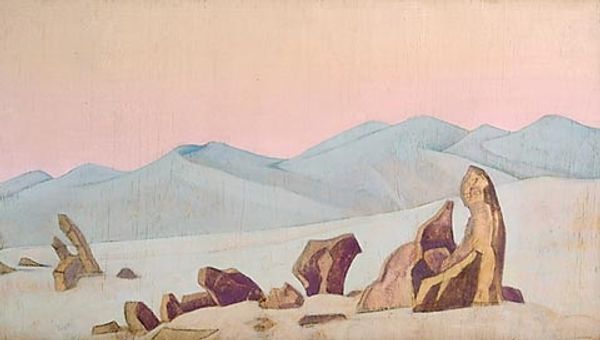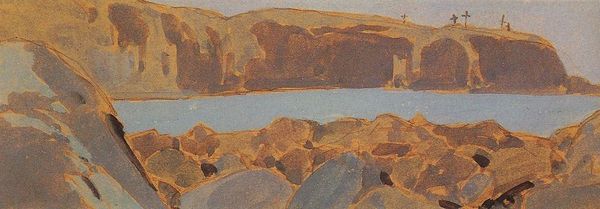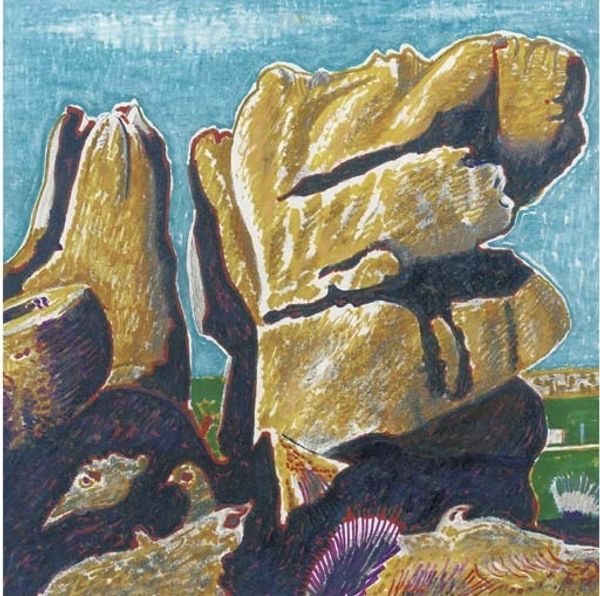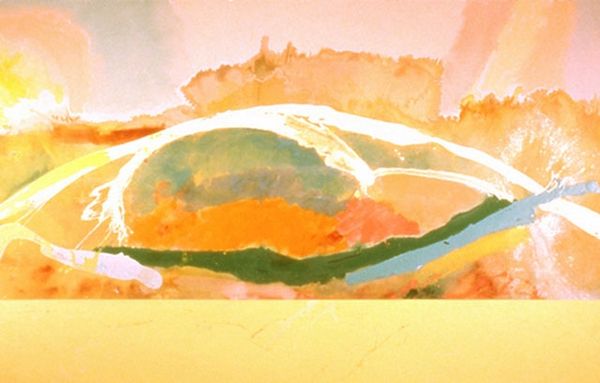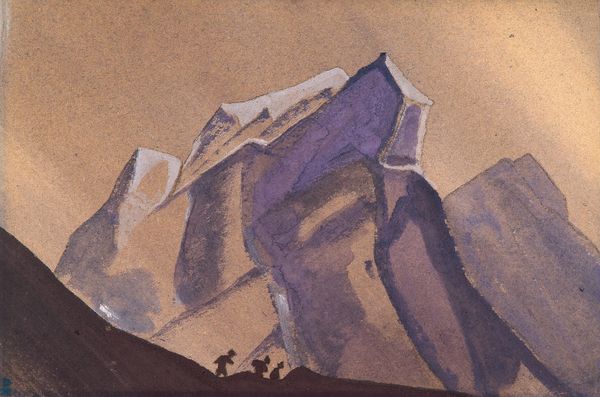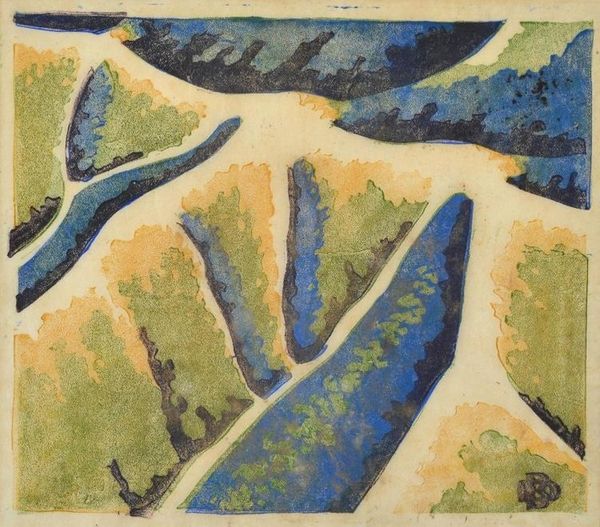
painting, watercolor
#
contemporary
#
painting
#
landscape
#
watercolor
#
geometric
#
abstraction
Copyright: Rita Angus,Fair Use
Curator: Welcome. Here we have Rita Angus’ watercolor painting, "Two Stones," created in 1966 and residing here at the Museum of New Zealand Te Papa Tongarewa. Editor: It's immediately striking—these huge, ambiguous stone forms floating above the landscape. The light seems to emanate from them, or maybe be absorbed by them, shifting the landscape beneath. What's so compelling about stone to take on this perspective? Curator: Angus was interested in exploring national identity. Remember the rise of regionalism? Placing specific importance to locality and its relationship to art. By emphasizing these massive stone formations within New Zealand’s geography, she may have meant to make a comment on land rights and belonging. Editor: Ah, so, there's an intentional disruption, then, of the accepted ways of depicting the landscape. It is striking that the stones seem weightless, the result of Angus' chosen media - watercolors. Yet those defined shapes demand a certain weightiness in conversation. How did that limitation become her freedom, how are her politics so entwined with materials at hand? Curator: Indeed. Angus actively sought to present New Zealand outside of traditional landscape tropes of her day; her simplification of form, flattening of the pictorial plane, was all geared towards seeing place through the eyes of its people and the specific moment, which we have to remember was post-war reconstruction and rethinking what role art would play in social healing. Editor: Looking closer at Angus’ use of the medium, those layers and bleeds, are as elemental and powerful. Think of the act of her application: thin layers accumulating, changing under its own conditions. It is evident that the artist embraced both mastery and accidents. The stones, then, might signify more than just place and belonging. It could very well indicate the sheer force that the medium has at our disposal. Curator: I'd agree. By focusing on fundamental forms she prompts us to reconsider our connections. New Zealand was trying to re-establish itself in the post-war climate by focusing on land, resources, and history to establish this identity. Rita challenged that vision in form, but her material choice has brought a lasting impact of change that her audiences understood. Editor: Right. In "Two Stones", what at first seems like an abstracted depiction is deeply entwined with political and cultural threads as understood through the means of its creation. Curator: Exactly. Hopefully you've gained some insights regarding the legacy of national identity that exists for this specific place as seen and felt through material.
Comments
No comments
Be the first to comment and join the conversation on the ultimate creative platform.
